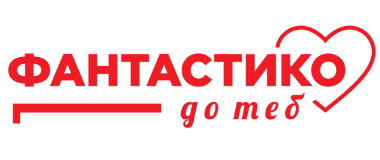
ARTON PROGRAM - The therapeutic power of the group
Creative projects involving group work - general musical performance or group painting, collage, sculpture - are useful in helping to explore and strengthen social...
No child relishes a trip to the dentist. But for one like Caroline, an autistic 7-year-old who has sensory processing issues, even a routine visit can be a traumatic event. Two years ago, “all of the different sounds and smells, along with the closeness of the people, really threw her over the edge,” recalls her mother, Jaime. Caroline was so frightened when her chair was reclined that she “jumped over the back of it and ran out to the parking lot,” Jaime says. “We tried to bring her back in but she was so upset that the dentist couldn’t do anything.”
When the Coral Gables, Florida, mom told Caroline’s occupational therapist, Willow Rossi, about the episode, Rossi had a thought: When she worked with Caroline she included her black Lab Tippy, who is what’s called a facility dog. Tippy seemed to help Caroline stay calm, so why not have her accompany the girl to her next appointment? Because Tippy is also a certified service dog, she has full access to public places including stores, buses and planes.
It made perfect sense to Jaime: “Overall, Caroline was happier and calmer on the days that she saw Willow and Tippy,” she said. Caroline didn’t scream, hit or run away as she sometimes did with other therapists. At first, her dentist was reluctant, but after a bit of urging from a determined mom, Tippy was invited to come along.
It worked. “Caroline willingly walked Tippy into the waiting room and then the exam room,” Rossi says. “Tippy lay with her on the chair throughout the exam. Although Caroline was still anxious, she did it!”
A therapist like Rossi uses a facility dog—often described as a “therapy dog,” which is actually an umbrella term—as a modality, or tool, to help a child attain her goals. Tippy serves as a huge motivator, making therapy both fun and rewarding for children with a wide range of challenges, including Down syndrome, learning disabilities, ADHD, and autism. She even coaxes older children who may be bored by the repetition of therapy to attend sessions.
For instance, if Rossi is working on fine motor skills, she might have a child brush Tippy’s teeth or coat, or use tongs to feed her. The “bug game” involves picking yarn or pom pom “fleas” off the patient pup’s back.
Another fine motor task that also increases core (trunk) strength involves sit-ups, with the child reaching back over his head to pick up and hand Tippy a treat each time he rolls down to the floor. Tippy also loves to hide in the ball pit, encouraging kids to dig down to find her. They don’t have to know they’re getting tactile input and increased body awareness; it just adds to the fun.
If Rossi wants to work on sequencing, following directions and memory, she’ll have the child carry out a sequence of commands for the retriever. In the next session, she’ll see if the child can remember them, and then add more.
Facility dogs are just one of myriad animals being used by an increasing number of clinicians and therapists to help kids with developmental, learning and behavioral challenges. Dogs have been trained for many different roles, from helping reluctant readers, who feel more comfortable reading aloud to a patient, nonjudgmental animal, to providing solace to those who have been through a disaster. Some courts are using dogs trained to comfort abused children facing the ordeal of testifying—and to give them a positive memory to have of the experience.
Horses also play a key role in this movement. Hippotherapy, derived from the Greek word “hippos” for “horse,” is a treatment strategy used by physical, occupational, and speech and language therapists in a one-to-one treatment session. It may be used to help those from as young as 18 months to adults with developmental delays, brain injuries, learning disabilities, sensory issues, autism and other challenges.
There’s also therapeutic riding, supervised by a certified instructor, in which children work on social, emotional and physical goals as they learn to sit properly in the saddle, use reins to command the horse, and ride at a walk and then a bouncy trot.
Eight-year-old Rose does hippotherapy at GallopNYC . When the Brooklyn girl was diagnosed at 3 with mild sensory processing issues and low muscle tone in her hands and core, it only took one trip to the stable for her mother, Catherine, to sign her up to augment her OT and PT. Five years later, Catherine reports, “Rose is very much in control while riding a horse. Usually a very floppy girl, she sits straight as a door while riding. This gives her great confidence and satisfaction.” Even better: the joy Catherine sees in her daughter’s face when she interacts with the horses: “She cares deeply about the animals, more so even than other humans.”
A sense of mastery is also very valuable to kids with diagnoses such as reactive attachment disorder, bipolar, cognitive learning disorders, and autism, says Michael Kaufmann, director of farm and wildlife at Green Chimneys, a therapeutic day school and residential treatment center in Putnam County, New York. “It feels awesome when a horse starts listening to you,” he notes. “A 1,500 pound horse is actually going where you want it to go, you can tell your parents, and most of your friends haven’t done it.”
But working with horses also teaches kids discipline. “There is a lot of frustration tolerance to learn,” Kaufmann says. “You have to earn a certain level of trust and listen to adult instructions. In the barn, there are clear rules and codes of behavior. It’s three scoops of grain, not two, not four.”
Back on Long Island, mom Elizabeth Mullen says the simple acts of brushing and tacking horses have alleviated daughter Bailey’s OCD. “That touch has already calmed her down,” Mullen says of her 11-year-old. “It used to take two hours for her to fall asleep. Within three weeks of being with the horses, she was calm enough to fall asleep within a half hour.” Of course, little brother Cooper’s autism service dog Kirby “definitely helps her as well.”
While there is little research to back up the therapeutic claims of these programs, the use of animals in therapy goes back to the beginning of psychoanalysis. Sigmund Freud allowed his two chows, Lun and Jo-Fi, to sit in on his sessions, admitting with “complete sincerity that he often depended on Jo-Fi provide him with an assessment of his patient’s current mental status.”
Many parents don’t need to be convinced. Take Caroline, the girl who needed OT Rossi’s facility dog to get through her dental exam. Soon after, the girl received her own service dog, another black Lab named Zumi, to assist with socialization and calming. At first Zumi assumed Tippy’s place in the chair. But no longer. These days, Caroline “can go to the dentist with or without Zumi!” Jaime says. She has no doubt who to credit for this breakthrough: a wet-nosed, tail-wagging best friend named Tippy.
Article re-posted from https://childmind.org/

Creative projects involving group work - general musical performance or group painting, collage, sculpture - are useful in helping to explore and strengthen social...

In the ARTON Program our team of oncopsychologists, art therapists and music therapists develops the process of children's creativity as a process of...

In ARTON sessions, creating a piece of music or a song is an emotional experience of coping and satisfaction for the participating children. They make friends with...

Painting provides patients with a spontaneous, plastic method of depicting thoughts and experiences. Painting with paints is not as structured as with pencil or...










